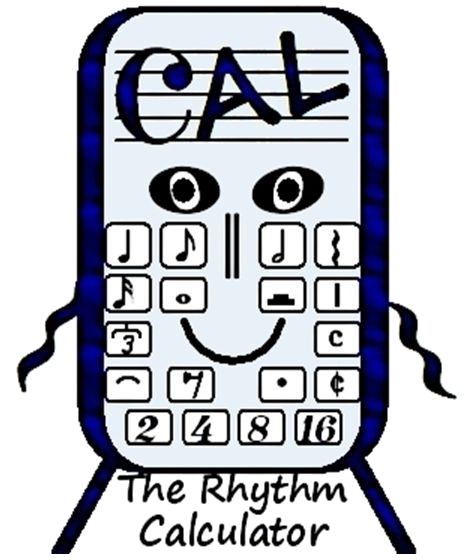Rhythm is a Language

Rhythm notation is a “universal language” used world-wide.
I promised Q that I would tell you why I am called Cal.
There are a few reasons for my name. You probably noticed I have buttons that have lots of different music symbols written on them, so – I am a Rhythm Calculator.
Rhythm Notation requires knowing how to count and why Q said that he could always count on me.
Exact measurements are needed in order to define all types of note duration.
As Cal the Rhythm Calculator, my quest is to teach you how these measurements are calculated, and to help you learn the fundamentals of Rhythm Notation.
![]()
Meet Cal
Universal Language
Rhythm Notation
Music Staff
Origins of the Staff
Rhythm Laboratory
Notation Parts
Note Heads
Stems
Beams
Flags
Note Construction
Common-Time
Measures
Bar-Lines
Counting in Common-Time
Whole, Half and Quarter Notes
Ties
Dots
Time-Signatures
Q’s Rhythm Review
Time-Signature Rules
Beat Accent
Down-Beat and Up-Beat
Conducting Patterns
Cut-Time
Common-Time Beat Emphasis
Three-Beat Measures
Note Values
Rhythm Workouts
The ‘Cycle’
Note Equivalents
Counting Sub-Divisions
“If You Can Say It, You Can Play It” Author’s Story
Sub-Division Lingo
Quarter Notes with Eight Notes
Adding Sixteenth Notes
Notes Sharing Beams
Beam Awareness Pointers
Triplets
Triplet Workout
Compound-Time
Compound-Time Workout
Music Rests
Rest and Note Equivalents
Whole Rest Half Rest
Quarter Rest Eighth Rest
Sixteenth Rest Dotted Rests
Q’s Rest Review
Process of Sub-Division
Relating Rests to Notes
Rhythm Exam Prep
Level 1 Rhythm Exam
Level 2 Rhythm Exam
Level 3 Rhythm Exam

